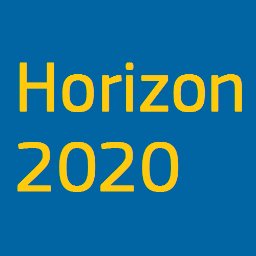Nature-inspired Control of turbulent Flows (NiCoFlow)
 |
This project has received funding from the European Union’s Horizon 2020 research and innovation programme under the Marie Skłodowska-Curie grant agreement No 708281. |
Many aspects of animal flight still remain unexplored, despite the enormous possibilities they offer to improve the current aerospace science & technology. One such aspect that received least attention of the scientists is the following: the wing surfaces of the flying animals are coated with hairs, feathers and other filamentous structures. These flexible self-adaptive hairy layers are found over wide range of Reynolds number regime as shown in the figure below. They influence the flow field characteristics significantly, and it has been reported that such coatings may be used to control the laminar-turbulent transition as well as turbulence in order to achieve energy efficient flight.
 |
The objectives of the NiCoFlow project are:
to devise the essential mathematical and computational framework to study the flow around objects with surface-mounted self-adaptive hairs
to elucidate the fundamental fluid dynamic mechanisms through which the surface coatings can enable new flow control strategies.
In this work, a homogenized poro-elastic continuum models will be used to describe the flow through the hairy layers. Moreover, a computational approach to simulate two-way coupling between such homogenized continuum models and the surrounding fluid flow will be developed.. This approach will be thoroughly validated by simulating fluid flow over a flat plate attached with surface-mounted flexible hairs and comparing the numerical results against existing experimental data. The validated model will be used to perform direct numerical simulations of transitional and turbulent flows to reveal the detailed flow characteristics, and shed light on how these self-adaptive hairy features may delay the transition to turbulence and reduce the turbulent skin-friction. A potential passive control technique, relying on these nature-inspired hairy coatings, will have a large industrial impact, including applications in aeronautics, energy harvesting and the transport sector.
Members
Sudhakar Yogaraj — Individual fellow
Shervin Bagheri — Host
Papers, Presentations & Conference proceedings
Y. Sudhakar, U. Lacis, S. Bagheri, Direct numerical simulations of turbulent flow over anisotropic porous walls 16th European Turbulence Conference, 21–24 August 2017, Stockholm, Sweden.
Y. Sudhakar, U. Lacis, S. Bagheri, Towards multiscale modeling of turbulent channel flow over porous walls, 69th Annual meeting of APS-DFD, 20–22 November 2016, Portland, USA.
Related publications
The following are the journal articles, related to the NiCoFlow project, published by other researchers in Shervin's research group
U Lacis, S Bagheri, A framework for computing effective boundary conditions at the interface between free fluid and a porous medium, Journal of Fluid Mechanics:812, 866–889, 2017. (GitHub codes)
U Lacis, GA Zampogna, S Bagheri, A computational continuum model of poroelastic beds, Proceedings of the Royal Society A 2017, DOI: 10.1098/rspa.2016.0932.